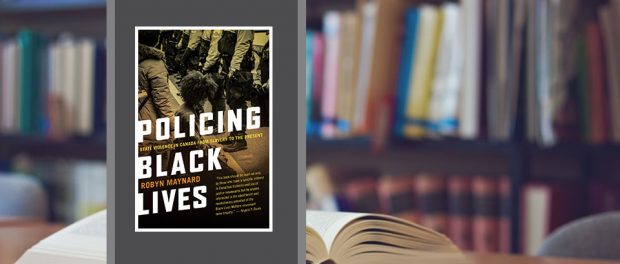Policing Black Lives: State Violence in Canada from Slavery to the Present
By Robyn Maynard

Robyn Maynard’s Policing Black Lives: State Violence in Canada from Slavery to the Present is a searing, expansive compendium analyzing Canadian institutions and how they perpetuate white supremacy through the oppressive force of systemic racism. And for white people, in particular, sometimes those truths are hard to hear, so let’s get uncomfortable.
Covering pre-Confederation slavery, Racial Capitalism, Law Enforcement, Mysogynoir, Social Services, and Education, the table of contents alone demonstrates the reader is in for a deluge of truths.
Maynard has organized her book so you can ‘begin at the beginning,’ as it were, or take on each chapter and topic independently. Either way, the reader will come away equipped with new information and a better understanding of the gross injustices in our society. This is not meant to paralyze: it is to help bring issues into clearer focus with the hope that knowledge brings action for change.
Maynard outlines pre-Confederation slavery in Canada and further illustrates how the Multiculturalism Act of 1971 did little to address inequality for Black Canadians. She illustrates, through copious examples, how, “Anti-Blackness in Canada often goes unspoken” (pg. 3). Further connections are made between anti-Blackness as part of, “the reality that Canada is a settler colony founded on colonization and genocide.” (pg. 11) and the Indigenous experience since colonization.
As an educator, I honed in on chapter “The (Mis)Education of Black Youth.” As a middle class, middle-aged white woman, I cannot ignore that I have been afforded great privilege. Privilege is one of those things, when you have it, you really do not see unless you undertake significant learning to become more self-aware. This book is an important investment to unlearn so much of what has been intentionally hidden or ignorantly ignored by many.
Maynard pulls no punches when outlining how, ”Black youth are so often not seen or treated as children, schools too often become their first encounter with the organized and systemic devaluation of Blackness present in society at large” (pg. 209). While expectations within the system are deeply problematic, Black youth have consistently identified how their teachers’ low expectations of them impacts their lack of engagement. She shares the ongoing evidence of Black students being steered away from the academic streams and that, “only 54% of Black youth reported that they felt supported by teachers” (pg. 215). Black students treated as a threat within the walls of the school is equally troubling.
Maynard further outlines how, “schools have become an increasingly carceral experience for Black, Indigenous, and other racialized students, in terms of both the general environment and disciplinary practice” (pg. 218). To illustrate this statement, between the 2011/12 and 2015/16 school years almost half of the students expelled from the Toronto District School Board were Black whereas only 10% expelled were white (pg. 218).
There are ongoing moves to remove School Resource Officer (SRO) programs from boards across the province. Toronto cancelled its SRO program in 2017, and more boards are discussion cancelling their programs. However, there is a misunderstanding by some trustees of the deep and scarring impacts the SRO program can have on Black, Indigenous, and other racialized learners. Furthermore, an often overlooked and crucial thread that Maynard expertly weaves through her book is the impact of our history and policies on Black women and girls.
While many might consider the facts, “too depressing” as a society that seems to continually seek amusement and escape, Maynard ends her book with a hopeful tone. She reminds us that reforms do not challenge underlying systemic racism and, “without a transformation of the existing political conditions…meaningful justice is unlikely to manifest itself” (pg. 231). She concludes with the fact that, “radical changes may be necessary to achieve racial and economic justice should not deter us from believing that we can, and should, work toward a society that deprioritizes, disinvests and dismantles institutions that mandate the violent subordination of our most vulnerable” (pg. 234).
Anti-racism work demands becoming comfortable with being uncomfortable. As Canadians, Ontarians, and education workers, we must confront our own history in order to reshape a fairer future for everyone. This book is a valuable resource in helping to accept what may often be uncomfortable truths in order to achieve that goal.

Leave a comment